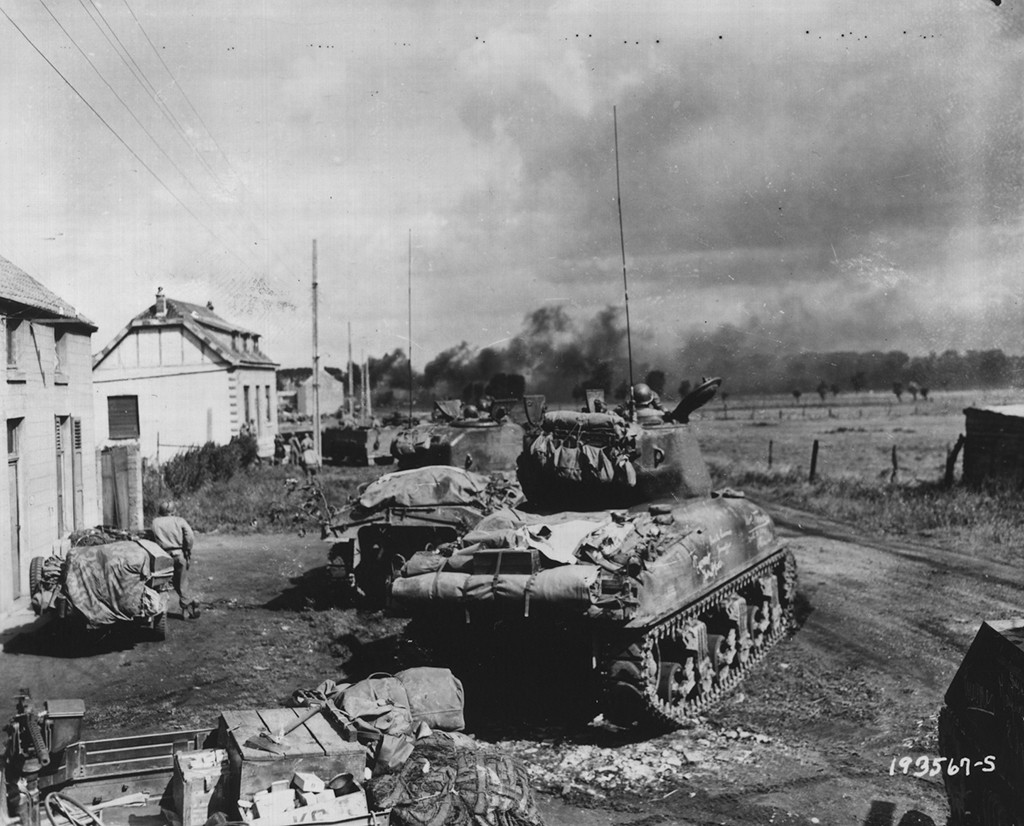The 1st U.S. Army, on its way to Tournai, crossed the Belgian border in the morning of 2 September 1944 in the hamlet of Cendron (Hainaut). On the same day the German authorities and Belgian Nazi collaborators packed their bags, whereas the 2nd British Army at Douai, France, received the order to march on to Brussels. The British soldiers arrived in Belgium on 3 September and in the evening, together with the Belgian Brigade Piron, they entered the capital. On 17 September almost the entire territory was liberated. This rapid liberation was partly made possible by the Resistance Groups, that had been particularly active. They guided the Allied troops, prevented destruction by the fleeing Germans, such as at the Antwerp harbour, and hunted down collaborators.
The Allied troops received a hero’s welcome in Belgium. In town and country the streets were coloured by the American, British, French, Soviet and, of course, Belgian flags. They brought with them items that had become very scarce, like real coffee, chocolate, Coca-Cola, cigarettes, jazz music and much more. The legitimate authorities of Belgium were re-established. In the absence of King Leopold III, Prince Charles was appointed Regent on 20 September. Now that the occupier had left, it was time to punish collaborators. Sanctions were imposed and the citizens used a form of popular justice: women were shorn, lynchings were numerous, even though real executions were rare. But Germany had no intention to give up yet. On 16 December Hitler surprised everyone with a last offensive in the Belgian Ardennes, known as the Battle of the Bulge. It took another six weeks of fierce fighting until on 4 February 1945 the complete Belgian territory was liberated.
